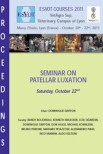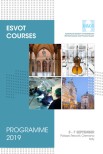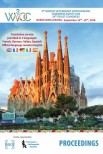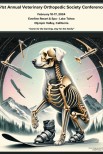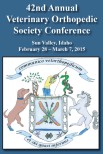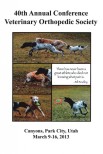Kinematic variables of the walk in adult horses have been well described in the literature, but few studies have investigated growth-associated changes in these parameters. The objective of this study was to quantify linear and temporal walk patterns in Warmblood foals during the preweaning growth period. Nine foals were videotaped at the walk at 3, 11, and 21 weeks of age. Repeated-measures analyses were used to compare trait means between age groups. No significant effects owing to gender were found. Although stride length and stride duration increased as foals aged, neither differed across age groups when adjusted for wither height or velocity. Most kinematic variables did not differ across age groups when adjusted for Froude number. Overstride distance decreased by more than 40% in a linear manner from 3 to 21 weeks, and had an inverse relationship with distance between diagonal limbs during stance phase. Diagonal stance duration was greater than lateral stance duration for all age groups, indicating foals did not achieve an even, four-beat rhythm by the end of the study period. Changes in walk kinematics over time were independent of differences in velocity and increasing height during growth, and may indicate the need to account for body length or other morphometrics when assessing gait parameters in growing animals. Further research is needed during postweaning growth to determine when kinematic variables become consistent with those of adult horses.
Linear and Temporal Kinematics of the Walk in Warmblood Foals
Date
February 2012
Journal
Journal of Equine Veterinary Science
Volume
32
Number
2
Pages
112-115
